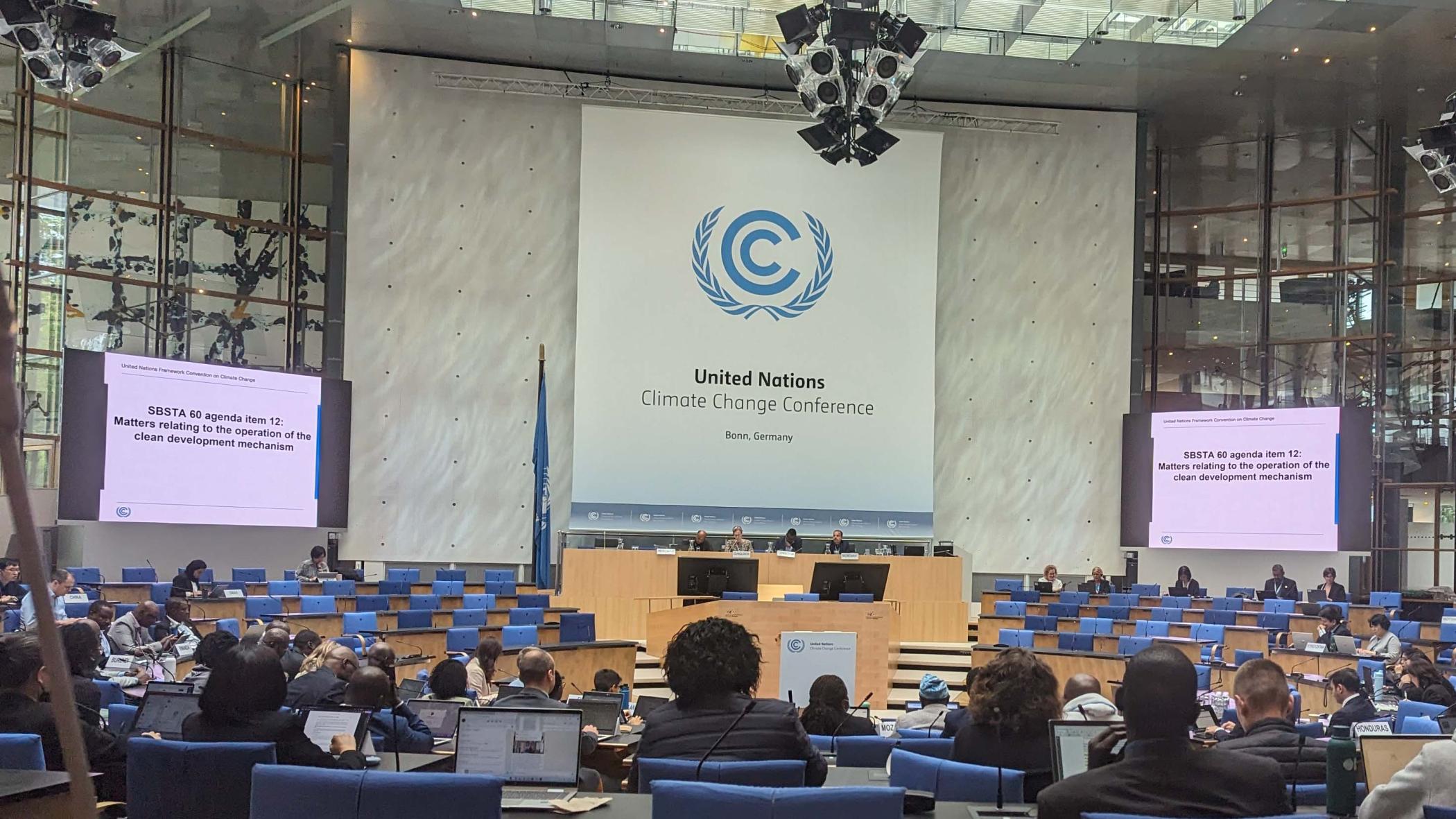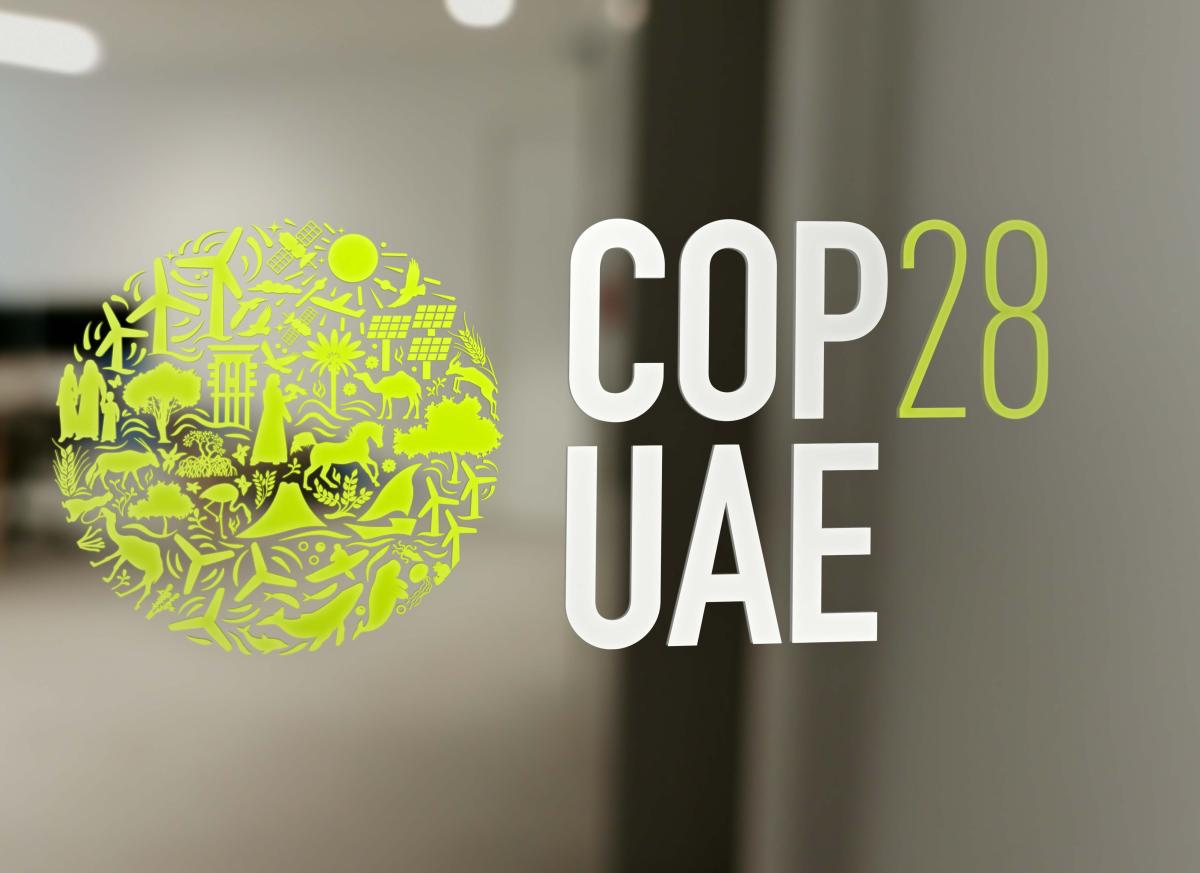Article 6 in focus: Bottlenecks and breakthroughs at Bonn 2024

The Bonn Climate Change Conference 2024 was a crucial opportunity for negotiators to discuss Article 6 of the Paris Agreement – the highly contested rulebook that governs carbon markets. Here, Dr Injy Johnstone explains the issues on the table for Article 6 at Bonn and what has changed after the negotiations, including a few important breakthroughs.
Introduction
The international carbon markets established under Article 6 are a key tool in the Paris Agreement toolbox. Designed right, such carbon markets have the potential to raise ambition: helping facilitate rapid emissions reductions and scaling of removals that are needed to keep on track. Designed wrong, they could derail countries’ Nationally Determined Contributions to the Paris Agreement (NDCs) – leaving the world millions, if not billions, of tons of CO2 short of what’s required to stabilise our climate.
Because of the high stakes involved in getting these market mechanisms right, Article 6 has long proved one of the most fraught items at the international climate negotiations. Indeed, progress on such items reached a standstill at COP28.
This means that the 60th session of the Subsidiary Body for Scientific and Technological Advice (SBSTA)) held in Bonn from 3-13 June 2024, represented the first time that negotiators got to revisit these rules and make further progress. This article outlines the key issues discussed by negotiators, and any updates or decisions made at Bonn.
Quick refresher
The two market mechanisms under Article 6 are:
Article 6.2 - Cooperative Approaches: A wide-ranging mechanism designed to enhance country to country mitigation ambition. Cooperative approaches can generate mitigation outcomes which can be transferred from the host country’s greenhouse gas (GHG) inventory to that of the buyer, making it easier for some countries to achieve their pledges to the Paris Agreement.
An example of a cooperative approach could be that Country A invests in renewable energy and exceeds the emissions reduction target it set itself in its NDC, creating a surplus. Country B, needing to reduce emissions, then buys some of Country A's surplus, resulting in an international transfer of a mitigation outcome from Country A’s GHG inventory to Country B’s GHG inventory.Article 6.4 - Sustainable Development Mechanism: A centralised mechanism whose methods and projects are overseen by the Article 6.4 Supervisory Body.
The mechanism produces units called 'A6.4 Emissions Reductions' (A6.4 ERs), which are subject to a corresponding adjustment from the host to the buyer’s country’s NDC, and ‘Mitigation Contribution A6.4ERs’, which are not.
An example of this is a company in Country C that finances a reforestation project in Country D, generating carbon credits. These credits are sold on the international market to other businesses or countries aiming to offset their emissions.
Key issues and updates from Bonn 2024
Since the overarching framework rules for these market mechanisms were agreed in 2021 at COP26, countries and corporates alike have taken various steps to operationalise them. Yet, there are a number of details still to be worked out which will affect the overall shape and effectiveness of the market mechanisms they establish. Many of these so called "crunchy" issues were discussed at Bonn and included the following key questions and clarifications.
Question 1: What types of projects should be allowed under Article 6?
Both Article 6.2 and Article 6.4 do not as yet have any explicit definition of what counts as an acceptable project, so long as it ultimately generates an emission reduction or removal. This leaves a lot of room for interpretation about what kind of project categories could be developed under Article 6, including types such as REDD+ that have been found to overcredit.
Proposals to include emissions avoidance and conservation enhancement activities within Article 6 illustrate these difficulties. For several years negotiators have debated whether or not these could be, or even are already included, within Article 6. Adding more confusion, these concepts tend to be used differently in climate negotiations compared to the voluntary carbon market at large. For example, while the voluntary carbon market tends to view REDD+ projects as generating emission avoidance credits, in the UNFCCC context several view it as an even more permissive category of activities – even potentially extending to being paid to keep fossil fuels in the ground. To date, no voluntary carbon credit – avoidance or otherwise – has been developed on the basis of this kind of activity.
Indeed, because of this discord, in a workshop last year on the matter countries noted that “the terms ‘emission avoidance’ and ‘conservation enhancement’ have no agreed definition, are ambiguous and are not used in the Convention, the Kyoto Protocol or the Paris Agreement”. They concluded that given ”considerable uncertainties involved”, these activities “may be more appropriate to include under voluntary or non-market approaches” rather than Article 6.2 or 6.4.
Update from Bonn 2024: Returning to this issue at Bonn, negotiators saw an opportunity to make it clear that until the overall rules will be revisited in 2028, emission avoidance activities are not included in either Article 6.2 or 6.4, and that as a consequence all units must be real emission reductions or removals. Given that the current project pipeline does not appear to be evolving in a net-zero aligned manner, this outcome could provide a powerful signal back to the market that Article 6 enabled projects require a higher standard than what has been accepted in the past on the voluntary carbon market.
Question 2: What information is required for projects to be able to be traded?
Article 6.2 establishes the procedures for corresponding adjustments that enable one country to transfer a mitigation outcome (generated as a cooperative approach or an Article 6.4 methodology) to another country’s GHG inventory.
To ensure a consistent standard in this process, the level of detail that participants need to disclose in order to internationally transfer a 'mitigation outcome' from one country’s inventory matters, as does information on the project that is generating the mitigation outcome itself.
Update from Bonn 2024: Parties made some progress on this at Bonn, whittling a list of 38 potential options down to 32. However, there were divergent voices in the room about how much of this information should be disclosed voluntarily, with some viewing all elements as critical to ensuring the mitigation outcome is of sufficient quality.
Matters related to what elements to disclose – and how compulsory these elements will be – will be high on the agenda at COP29, as will any potential definition of a “cooperative approach” under Article 6.2 that may arise.
Question 3: How transparent will the mechanisms be?
There are already significant concerns about the extent to which information essential to tracking and transferring the units generated via Article 6 could be marked as confidential and thus not easily accessible.
Update from Bonn 2024: One outcome from Bonn was that negotiators asked the UNFCCC secretariat to develop, publish and implement a specific code of conduct for Article 6 technical expert review teams as to how they should treat and review information identified as confidential. However, the procedures as to what counts as confidential still remain up for negotiation in Baku.
Question 4: What happens when information does not stack up?
The paper trail required to document the international carbon market flows connecting the majority of the world is immense.
Update from Bonn 2024: As part of the review process, the procedures to identify, flag and potentially address inconsistencies before a mitigation outcome is traded were discussed in Bonn. Options that will continue to be negotiated at COP29 in Baku include keeping everything inconsistent and unreviewed labelled as “under review” or having a range of labels, including those that flag persistent inconsistencies.
Question 5: How to ensure the mechanisms account for and incentivise additional mitigation effort?
One key difference between the Kyoto Protocol and the Paris Agreement is that now nearly all of the world has emission reduction commitments in the form of Nationally Determined Contributions. However, there is not yet clarity as to how use of Article 6 mechanisms will enhance mitigation ambition, if the baseline of "where and what to count as ambition" is not clear.
Update from Bonn 2024: Parties could not decide on when to review this, so this will also be revisited in Baku.
Relatedly, proposals were also considered at Bonn but similarly ultimately postponed until Baku that could see the Clean Development Mechanism still issuing new units until 2030, further calling into question the extent to which Article 6 will be generating and trading mitigation outcomes that move us towards rather than away from the goals of the Paris Agreement.
Conclusion and key takeaways
There has been important movement in some areas crucial to ongoing operationalisation of the mechanism despite much being brought to the table at COP29.
To move things forward negotiators have agreed to convene a workshop before Baku to review a number of these “crunchy” issues, from the reporting template of the Agreed Electronic Format to the process of addressing inconsistencies, and how various registries that will be set up under the system will exchange with one another.
As always, it's not what happens on the inside of the rooms, but outside, that really matters. Despite several bottlenecks that emerged in Bonn, there were also a few breakthroughs. Ruling out emission avoidance projects in both Article 6.2 and 6.4 and agreement to develop a code of conduct related to confidentiality could be a start to ensuring environmental integrity.
As to the question of whether or not this aim is reached, the proof will be in the projects, along with the system’s ongoing ability to identify and correct loopholes in what will be the largest international carbon market the world has seen to date.
Written with thanks to Vladislav Malashevskyy for his review.
Read more
'Oxford Offsetting Principles': Report calls for carbon offset market 'course correction'
Business Green reports on the University of Oxford's updated principles for carbon offsetting, which were co-authored by academics at the Oxford Smith School, Environmental Change Institute, and Department of Biology, and published on the Smith School's website.
Article 6 in focus: Outcomes from COP28
Injy Johnstone and José Luis Reséndiz from the Oxford Sustainable Finance Group give a behind-the-scenes perspective on Article 6 of the Paris Agreement (carbon markets), shaped by first-hand insights from the negotiation rooms at COP28.



